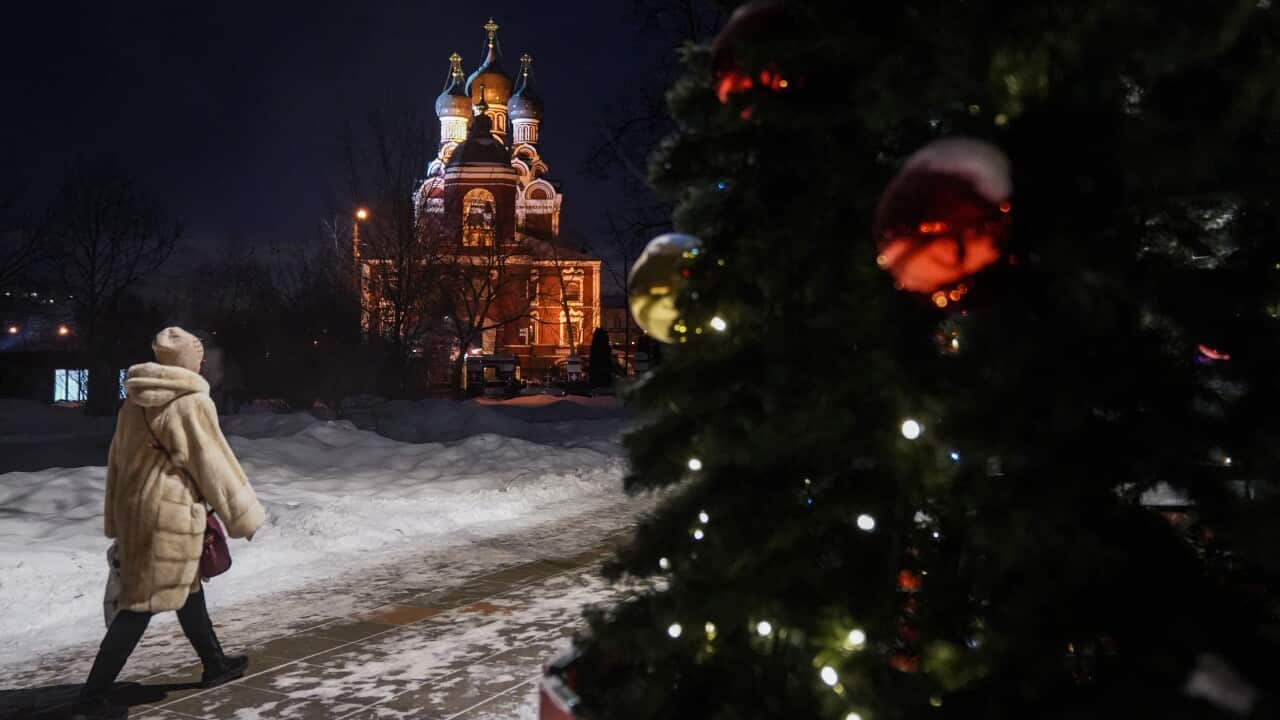Key Points
- More than 200 million Christians around the world are associated with Orthodox churches.
- Members of these communities officially celebrate Christmas on 7 January, as per the Julian calendar.
- Orthodox believers observe a six-week fast before the festivities, abstaining from meat, milk, eggs, and cheese.
Father Nikita Chemodakov has been serving at St Nicholas Russian Orthodox Church in Sydney's Fairfield for almost half a century.
The Christmas service in January 1978 would mark the first of many in Australia after graduating from a seminary in Jordanville in the United States.
Since then he has had many Christmases to celebrate with his tight-knit Fairfield community, but he said that the magic of this time of the year remains the same for him.
"It's a special time of reflection."

Orthodox priest of St Nicholas Church in Sydney, Nikita Chemodakov. Source: SBS News
The services will be held on 6 January, the Eve of the Nativity, around morning time, followed by an all-night vigil that starts in the evening. The next day, the Nativity of the Lord or Christmas, people are invited to come for the morning service.
Which countries are mostly Orthodox?
Orthodox Christianity is among the three major branches of Christianity, aside from Catholicism and Protestantism. The global population of Orthodox Christians is around 300 million, , which tracks global demographic trends in Christianity.

Currently, more than 200 million Christians around the world are associated with Orthodox Churches. Source: Getty / Anadolu Agency
The majority of Christians in the Middle East follow Orthodox Christianity. Meanwhile, oriental orthodoxy is observed in places like Egypt and Ethiopia. Specific rituals will differ depending on the church in the region.
Migration means communities also exist in locations outside Europe like Australia. According to the 2021 Census in Australia, 535,470 people identified with the Eastern Orthodox religion.
Why are the dates of Christmas different?
It all comes down to which calendar is being used as the reference to mark the birth of Jesus Christ, who Christians believe is the son of God.
Western churches use the Gregorian Calendar. Orthodox Christians use the Julian calendar, which results in the 13-day gap.
The Julian calendar has a leap year in the years divisible by four. The Revised Julian calendar was adopted by some countries from 1923, to align Christmas Day to 25 December. The revised calendar is identical to the Gregorian calendar until 28 February 2800.
Ukraine changes official date of Christmas
While Ukrainian Catholic churches have adopted the new date, and will continue to celebrate Christmas in January.
How is Orthodox Christmas marked?
Christmas is one of the most significant and revered holidays for Orthodox Christians.
The tradition of decorating homes with fir or pine trees and evergreen branches during the celebration of Christ's birth symbolised wealth and fertility.
Today, regardless of religious beliefs, it has become customary to have a Christmas tree during the holiday season.

Christmas is one of the most significant and revered holidays for Orthodox Christians. Source: Getty / Oliver Bunic
Why do Orthodox Christians fast before Christmas?
For many Orthodox believers, a six-week fasting period precedes Christmas festivities. During this period, the consumption of meat, milk, eggs, and cheese is prohibited.
Fasting is thought to redirect attention from self to others, reducing concerns about food and dedicating more time to prayer and assisting those in need.
Christmas feasts feature a table laden with a variety of dishes that include kutia (a ceremonial grain dish with sweet gravy), pancakes, jellied meat, pickled fish, goose or duck with apples, pies, and gingerbread. Symbolically, the Christmas table should host 12 dishes, a significant number in Orthodoxy.
What is the connection between 6 January and the 12 days until Epiphany?
In some places, the Christmas celebration merges with the ancient custom of 'Svyatki' — 12 days between Christmas and Epiphany ("manifestation"). Starting on 6 January (Christmas Eve, Kolyada), it concludes on 18 January (Eve of Epiphany, after the blessing of Epiphany water).

A Russian Orthodox priest dips into the icy waters of a lake during the celebration of the Epiphany holiday. Source: Getty / Olga Maltseva
Initially, the Orthodox Church disapproved of these rituals, but eventually the tradition of the Epiphany ice-hole plunge was introduced as a ritual to cleanse sins committed during Svyatki.


